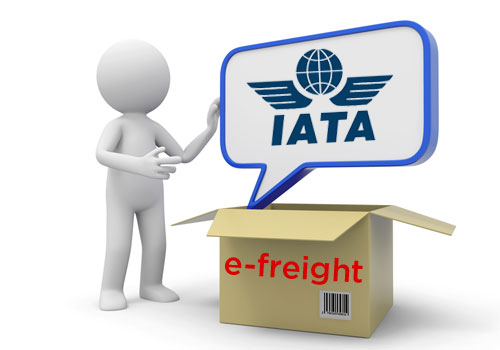
IATA’s vision for a paperless era should be an immense relievo for air cargo industry. This project was first revealed in 2006 by IATA with a mission to “Simplifying the Business” in air transport industry. The implementation process, since, is scheduled to achieve its 100% e-freight roadmap by the end of 2015, this paradigm shift from paper-based documentation to electronic data and messages is going to virtualize the whole air transport industry. And certainly, there are equal implications for dangerous goods transportation industry. Time has come to set our alarms and stand corrected that e-freight is futurism.
Whilst chalking out E-freight fundamentals, IATA has reaffirmed its commitment to safety, security, reliability and efficiency. These fundamentals include:
1) Implementation of across-the-board paperless transportation process within the global air industry
2) Inclusion of a set of business processes and standards defining the replacement of paper documents for the air shipping course of action
3) Identifying the locations for e-freight implementation
4) Motivating and driving industry stakeholders for the success of the initiative
5) e-Doc standards to depend upon EDI practice (IATA Cargo-XML or IMP)
6) Utilization of current infrastructure of air cargo messaging
7) Participants of the industry to link up with their partners through their in-house technology
Now, the scope of e-freight documents is another question that is worth asking. E-freight envisions to involve shippers, origin freight forwarders, export/customs authorities, origin GHA, carrier, destination GHA, import customs authorities, destination freight forwarders, and the consignees.

Three Pillars of E-freight Roadmap
E-freight roadmap presents a structured approach towards the implementation process of 100% e-freight.
Pillar I: Creating consensus globally among regulators and governments on the defined framework of network
Pillar II: Initiating with e-Air Waybill and complementing with the e-documentation of airfreight industry
Pillar III: A plan of digitalizing the commercial and special segments of airfreight must be there.
Checking Preparedness for E-freight Implementation
It is crucial to first determine the country/location’s preparedness for e-freight and in so doing, HLA (High Level Assessment) embarks upon evaluating the legal space for introducing e-freight in that particular jurisdiction. After passing HLA, the DLA (Detailed Level Assessment) brainstorms the legal and technical perspectives through engagement with local stakeholders and to evaluate their will for implementing e-freight. However, if a country/location can’t pass DLA, then LAP (Local Action Plan) is devised to achieve agreement by identifying the sources of conflicts. After working through DLA and LAP, IMP (Ready for Implementation) phase starts and this progress ends in “Live” whereby the country/location enforces e-freight Operational Procedures (e-FOP) and e-customs.
During the kickoff phase of the project, only six countries: including Canada, Hong Kong, Netherlands, Singapore, Sweden, and United Kingdom, could have developed their defined e-FOPS but for now till August 2013, 64 countries have successfully been forwarded for DLA and 59 countries have passed DLA. For LAP, discussions are on the way in 12 countries and 1 country has been staged in IMP by IATA. 47 countries go on live and 453 airports around the globe are already operating through e-freight. The e-freight monthly consignments have reached up to 1,693,62. This is a huge success so far but IATA has to cover more yet.
E-Docs in Dangerous Goods Transport
Ratifying IATA’s initiative of e-freight, ICAO mandated the dangerous goods transportation industry to adopt and implement e-documentation. For this purpose, the note at the beginning of Part 5, Chapter 4 of the Technical Instructions was found with sufficient legal space to introduce e-documentation in dangerous goods transport industry. On a contrasting finding, the requirements of attachment of two copies of the dangerous goods transport document and one copy along with the final destination of the consignment are haunting. Despite of existing odds, the futuristic e-Docs for shipping dangerous goods will transform the philosophy of transportation.
IATA has already published CXML Standards for e-freight in which the acronym for XML Shipper’s Declaration for Dangerous Goods is XSDG.
What’re the Strengths of E-freight?
e-Docs would replace the costs associated with paper-based documentation. Delays are always frustrating but thanks to e-freight, the data and messages would only be a click away. Efficiency would go higher and sustainability is achievable.
Adaptability is a key challenge particularly when we’re going to reform our working environment. The traditionalists may find it hard to keep pace with modern technology. The skilled human resource would be an asset but what about the old employees? Will they be willing to be trained? If no, are we going to fire them? And then, the electronic standards may cause a rift.
But are we really willing to live in old ages?


